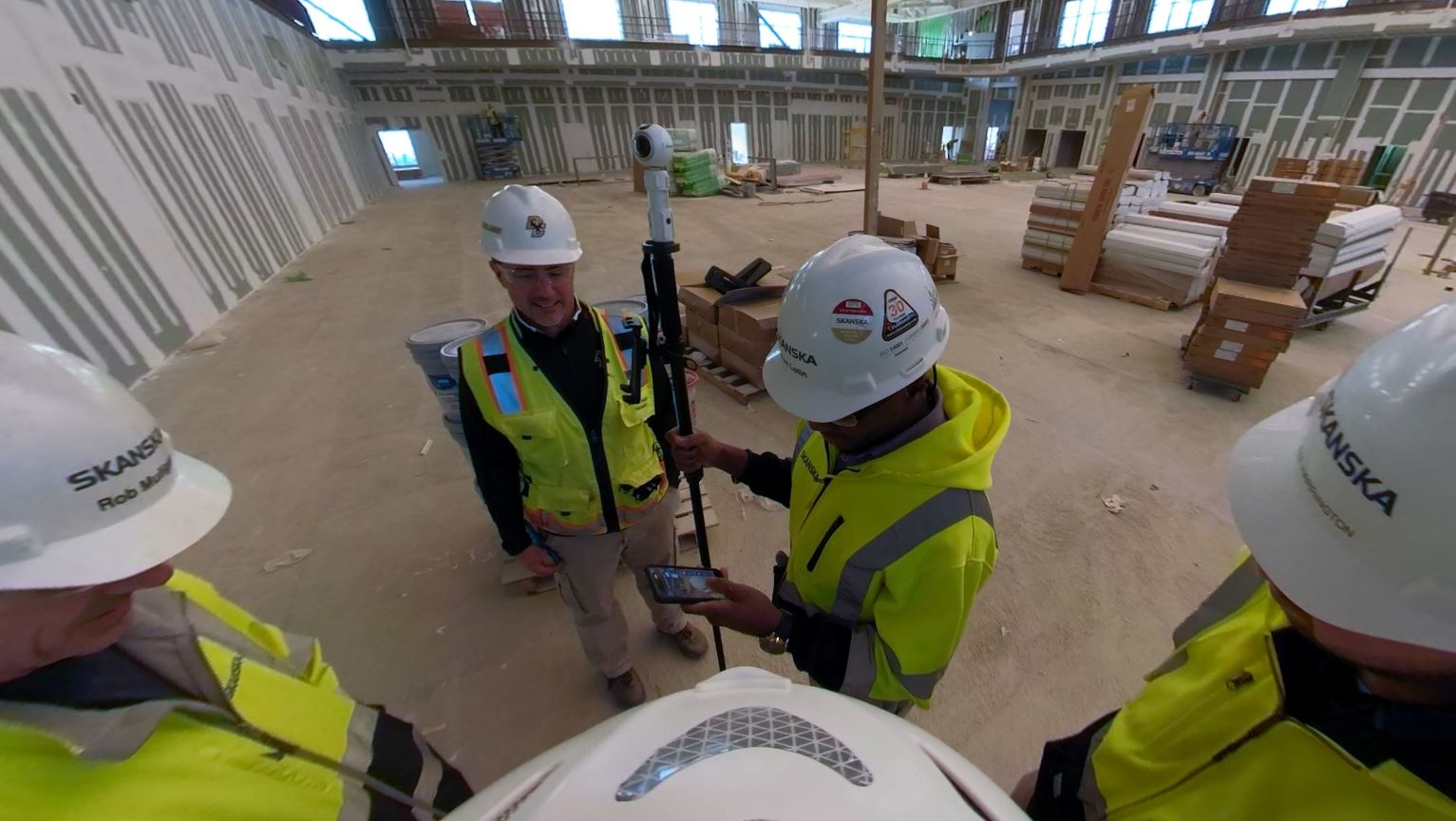Three-sixty-degree photography on construction sites is sort of like Google Street View at a smaller scale—a worker walks through a job site with a monopod or sometimes even with a helmet-mounted set of cameras and captures the sights and sounds at all angles. And the technology has become a boon for Skanska, especially for projects like the Moynihan Train Hall and LaGuardia Terminal B in New York.
“The resolution is just phenomenal,” said Tony Colonna, senior vice president of innovative construction solutions at Skanska of the new photography techniques, which increasingly can be done with off-the-shelf consumer products. “You can basically take anyone on a walkthrough without being at the site.” The 360-degree video is almost like being there, he reports. “You’re in complete control. You can stop, look around, look up, look down. So you’re not limited let’s say with traditional photographs or traditional video to just see maybe where the camera was pointing. With the 360 you have complete flexibility.”
It’s helped teams collaborate more fluidly and accurately across cities. “We might run into some sort of challenge on a site, and hey, you know what, the expert’s at the other side of the country,” Colonna explained. “You can bring them onto the site. We give them this kind of experience and have that engagement to help solve a problem.”
“These photographs are game-changing,” said Albert Zulps, regional director, virtual design, and construction at Skanska. “You capture that space and then later you can actually look at versions of those photographs, go back in time, peel back the sheetrock and go into the wall.” Three-sixty-degree photography can also offer a tremendous time savings and improve worksite safety, he said.
The photos integrate well with other tech, including software like StructionSite and HoloBuilder as well as mobile apps that allow people to locate themselves within a floor plan while taking a 360-degree photograph. In addition, it plays well with other emerging technologies Skanska is using, including models generated from 3D laser scans, VR headsets, and tech for making mixed reality environments. “What we’ve started to do is take that footage, and take those pictures, and you overlay them with the model,” said Colonna.
“If you really want to think about how everything ties together, it is all about collaboration,” Colonna said. “When you look at the construction industry, you’re trying to effectively manage a lot of different entities, from the design team, to the owner, to the builder, to all the contractors. What Skanska is doing as a construction manager is finding new ways to collaborate with all those teams. It’s really about, how do we use more visual technology to help us work better together?”
For more on the latest in AEC technology and for information about the upcoming TECH+ conference, visit techplusexpo.com/nyc/.
